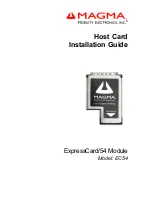
ACCULINK 3350 E1 NTU
Glossary-4
June 1996
3350-A2-GB20-10
ESD
Electrostatic discharge. An undesirable discharge of static electricity that can
damage equipment and degrade electrical circuitry.
ETSI
European Telecommunications Standardization Institute. An organization that
produces technical standards in the area of telecommunications.
E1
A wideband digital interface operating at 2.048 Mbps defined by CCITT standards
G.703 and G.704.
Fact
Factory configuration area. A configuration option set that is preset at AT&T
Paradyne (read-only options).
failure
An uncorrected hardware error.
fault
An accidental condition that causes a functional unit to fail to perform its required
function.
FCC
Federal Communications Commission. A board of commissioners that regulates
electrical communication systems that originate in the United States.
FDL
Facility Data Link. The selected framing bits in a wide-area link that are used for
control, monitoring, and testing.
FEBE
Far-End Block Error. Block errors reported by remote equipment.
Fractional E1
Individual DS0 channels that may be sold separately or in groups to provide
bandwidth that is some fraction of the total E1 capability.
frame
One identifiable group of bits that includes a sequence of bits for control,
framing, etc.
frame relay
A switching interface that is designed to get frames from one part of the network to
another as quickly as possible.
framing
A technique that separates bits into identifiable groups.
Generic-Interface Extension
MIB
An extension to MIB II that defines additional objects for control of generic
interfaces in MIB II.
Get command (SNMP)
Read-only access to SNMP MIB objects.
ground
A physical connection to earth or other reference point.
G.703
The ITU (formerly CCITT) standard for the physical and logical characteristics of
transmissions over digital circuits.
G.703 DTE interface
The G.703 interface on the rear panel of the E1 NTU.
G.704
The ITU (formerly CCITT) standard for the physical and electrical characteristics
of digital interfaces.
HDB3
High Density Bipolar Three Zeros Substitution. A line coding technique used to
accommodate the ones density requirements of E1 lines.
HDLC
High-level Data Link Control. A communications protocol defined by the
International Standards Organization (ISO).
HDSL
High bit-rate Digital Subscriber Line. A technique that allows high bit-rate (E1)
digital signals to be transmitted over subscriber (local loop) lines.
host
A computer system used for application processing on a network.
Hz
Hertz. A unit of frequency that equals one cycle per second.
ICMP
Internet Control Management Protocol. The protocol that enables in-band control,
diagnostic, and error messages to be passed between nodes in an IP internetwork.
ID branch
Identity branch of the E1 NTU menu tree.
interface
A shared boundary between functional units.









































